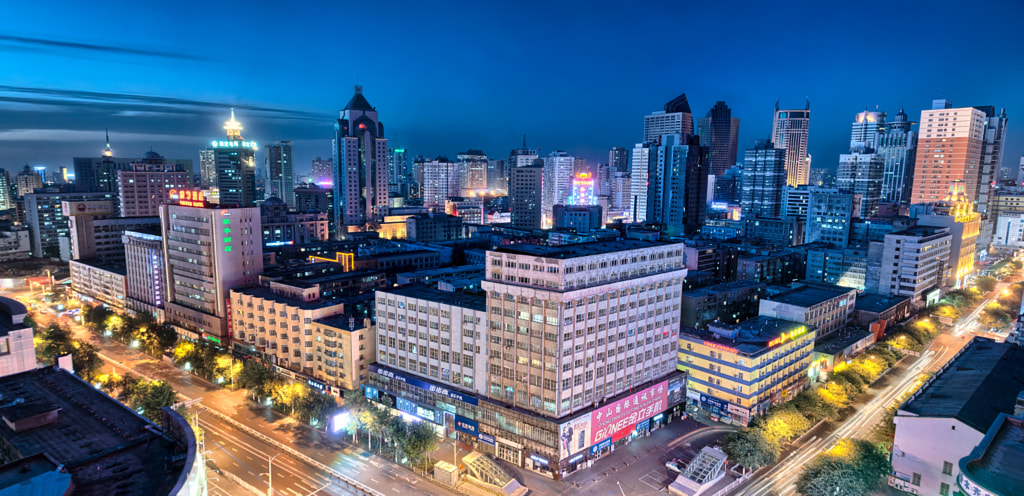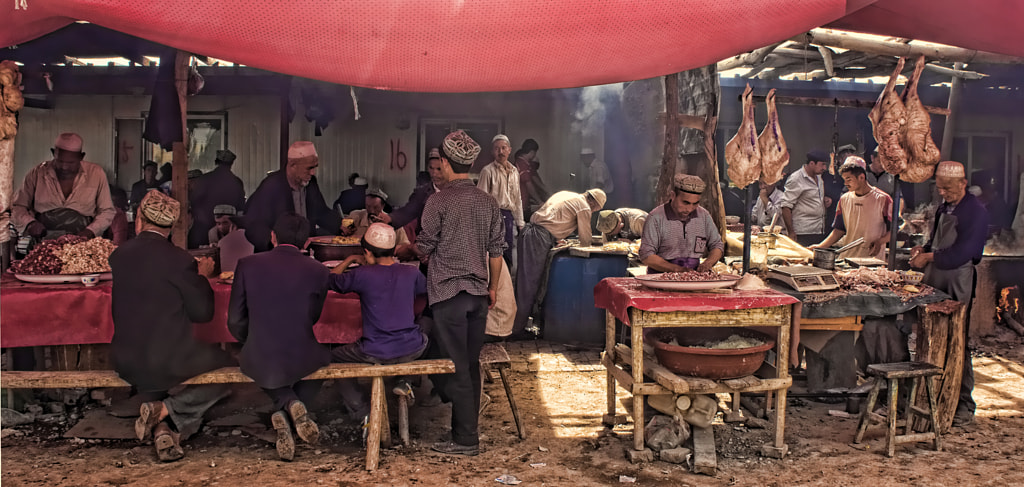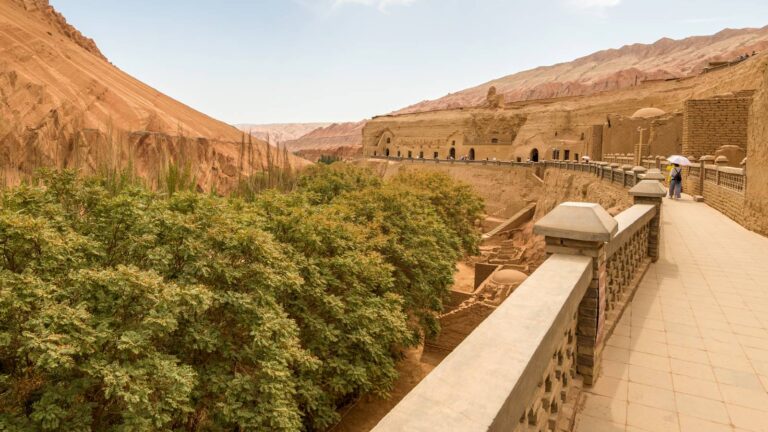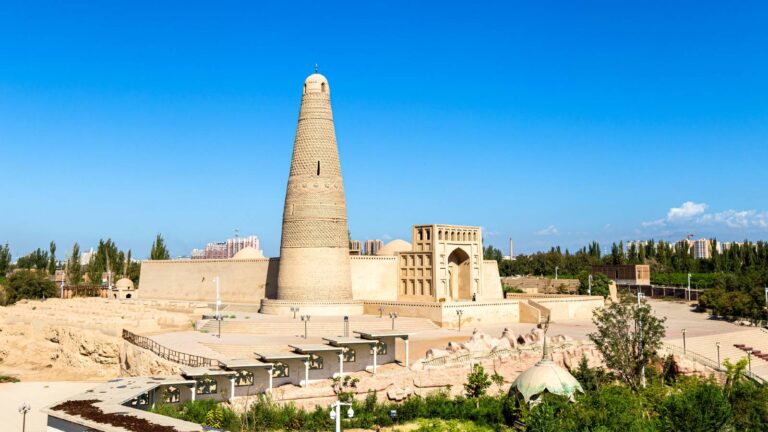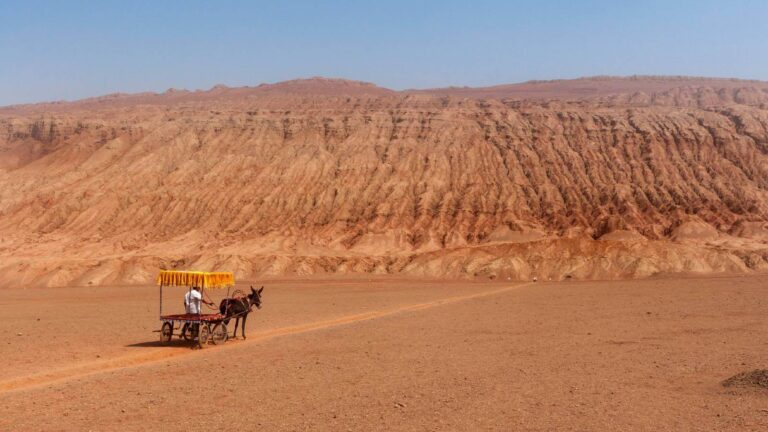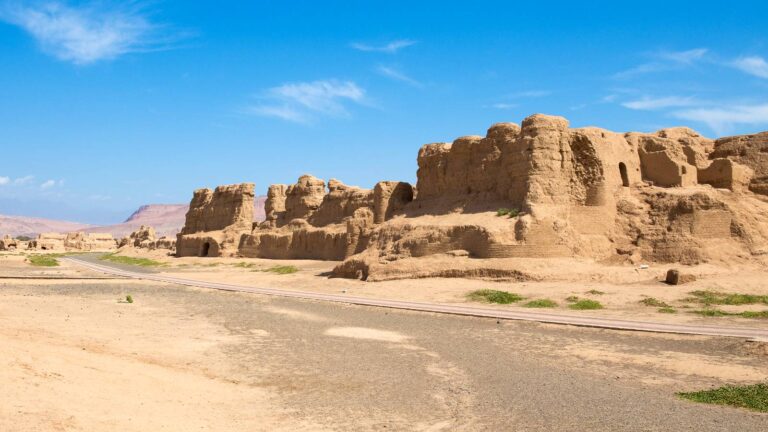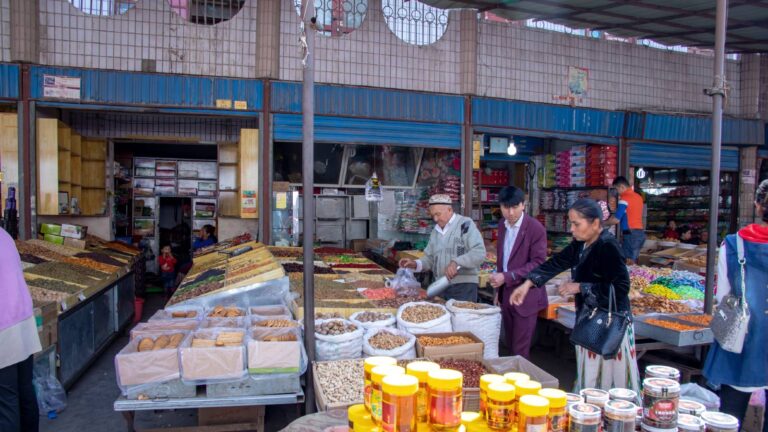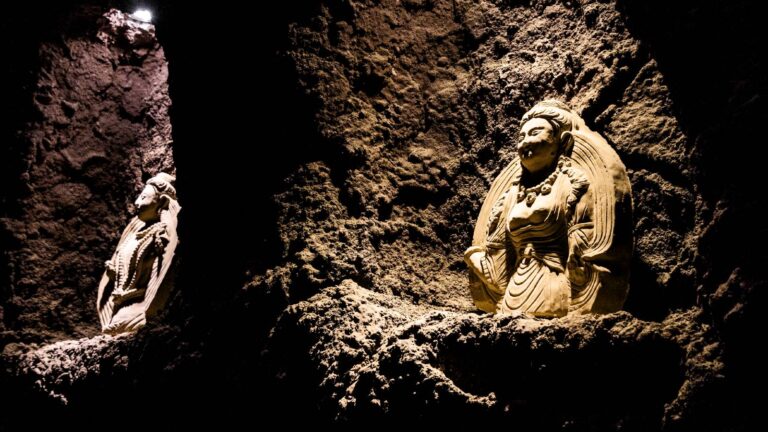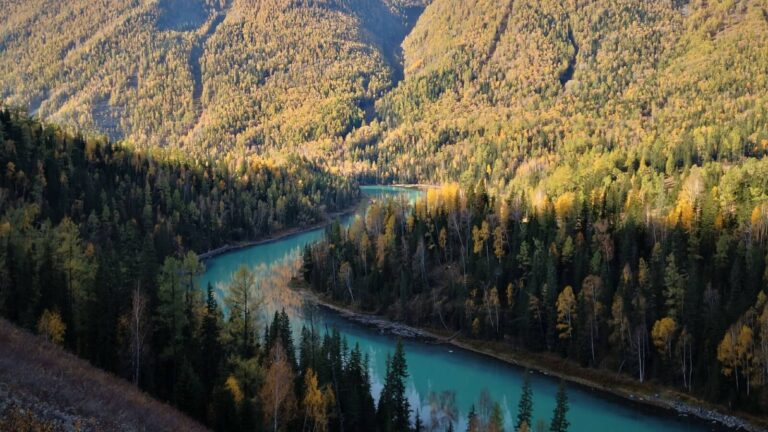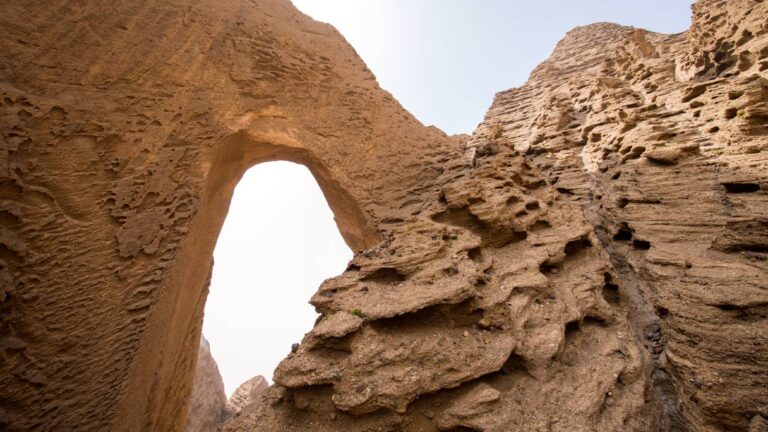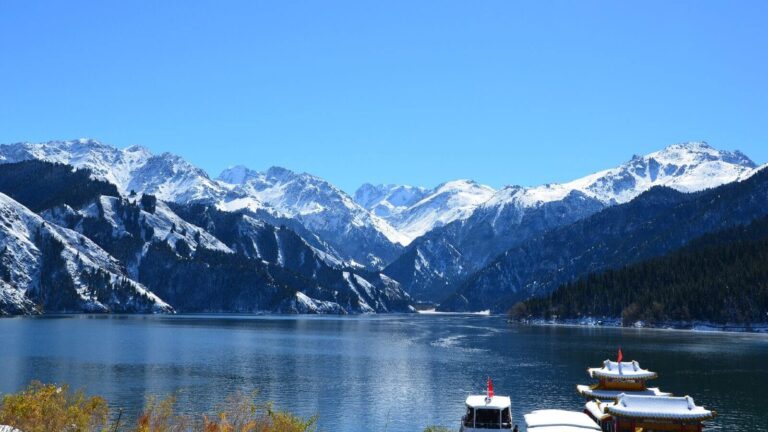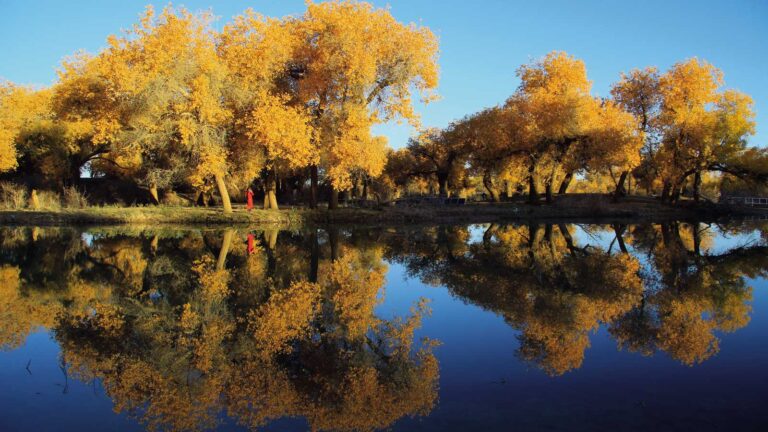The best ways to reach Xinjiang are by air and rail. Several major cities, including Kashgar and the capital Urumqi, have airports with direct flights from other Chinese cities and neighboring countries.
China’s high-speed rail network connects to Xinjiang via Gansu province. Transportation within the province includes high-speed trains and local rail and buses. Hiring a driver is also a good choice, offering flexibility and the chance to see remote areas at your own pace. Local city buses and taxis are readily available in urban centres.
It’s worth noting that travel in Xinjiang is complicated by its history of unrest and a heightened security presence. There are many areas of the province that require permits or remain off-limits to international visitors altogether.
Travellers should consider the ethical context and history of the region before their trip, consult advice from their national government, and book with a licenced Xinjiang travel agency.
The exquisite Mogao Caves are one of the world’s most important troves of Buddhist art, while the vast Turpan Basin has well-preserved ancient cities and vineyards, and the vibrant alleys and busy Sunday Market in Kashgar’s Old City retain the traditional Uyghur way of life.
These remarkable places provide a glimpse into the vibrant history and cultural exchange that once flourished along the legendary Silk Road.
Xinjiang is home to numerous Silk Road sights that stand as testaments to the region’s illustrious past. From the ancient city of Kashgar, with its bazaars and architectural marvels, such as the Idkah Mosque and Abakh Hoja Mausoleum, to the ruins of Jiaohe and Gaochang, once thriving, cosmopolitan centres of Silk Road trade, Xinjiang is a living museum of Silk Road heritage.
Xinjiang has always been a place of great cultural diversity, thanks in no small part to the movement of people and exchange of cultures, cuisines, languages and religions along the Silk Road.
Xinjiang is the traditional home of the Uyghur people, with their Turkic roots, who contribute significantly to the region’s cultural identity, alongside ethnic Kazakhs and Tajiks, resulting in a rich collection of languages and customs in the province.
Dining in Xinjiang thus involves a delightful fusion of flavours influenced by the Silk Road, and you’ll find piles of fragrant pilaf rice, succulent lamb skewers, hearty hand-pulled noodles, and delicate, filled pastries, which tell the story of the region’s history and cultural exchange.
Remote from the ocean and enclosed by high mountains, Xinjiang is cut off from marine climatic influences. It therefore has acontinental, dry climate. The Tien Shan separates the dry south from the slightly less arid north, so the northern slopes of the Tien Shan are more humid than those of the south.
Xinjiang is self-sufficient in food grains. About half of the total crop area produces winter and spring wheat. Corn (maize), another important crop, is grown more in the south than in the north. Rice, kaoliang (a variety of grain sorghum), and millet are also produced in large quantities.
Significant crops of long-staple cotton are produced in the Turfan Depression and the greater Tarim Basin, and cotton has become an important cash crop.

